Football: Women's game remains on the sidelines in Singapore
Sign up now: Get the biggest sports news in your inbox
Ashley Tham
Follow topic:
SINGAPORE - Women’s football here can be compared to a trip to an underground diner – tucked away on a quiet street and accessed through a nondescript door, privy only to those who seek it out.
But behind that door is a room that is alive and buzzing, just like the women’s football scene in Singapore.
Since 2014, the number of women’s teams in local leagues has almost doubled from 16 to 30. The Football Association of Singapore’s (FAS) Cubs Programme, for girls aged seven to 12, has seen the number of participants doubling from 40 in 2018 to 85 in 2019.
In 2014, there were only 20 girls under the Junior Centre of Excellence. Since then, the numbers have grown. In 2020, there were 30 girls in the National Under-14 team and 40 in the Under-12 Girls’ Development Squad.
Despite the burgeoning interest, there remain many hurdles – the lack of awareness, money and resources, and competitive opportunities at all levels.
Stephen Ng, 50, coach of the women’s national team, believes that people first need to get over the perception that football is a man’s game. “People need to know that football is football,” said the former national goalkeeper.
There are only two national competitions for female players – the Women’s Premier League and Women’s National League. In 2019, the former had five teams while the latter had 10. Both amateur leagues have been on hiatus since 2019 due to the pandemic.
Similarly, before the Asian Football Confederation (AFC) Women’s Asian Cup qualifiers in Tajikistan last September, the Lionesses had not played a competitive international in two years.
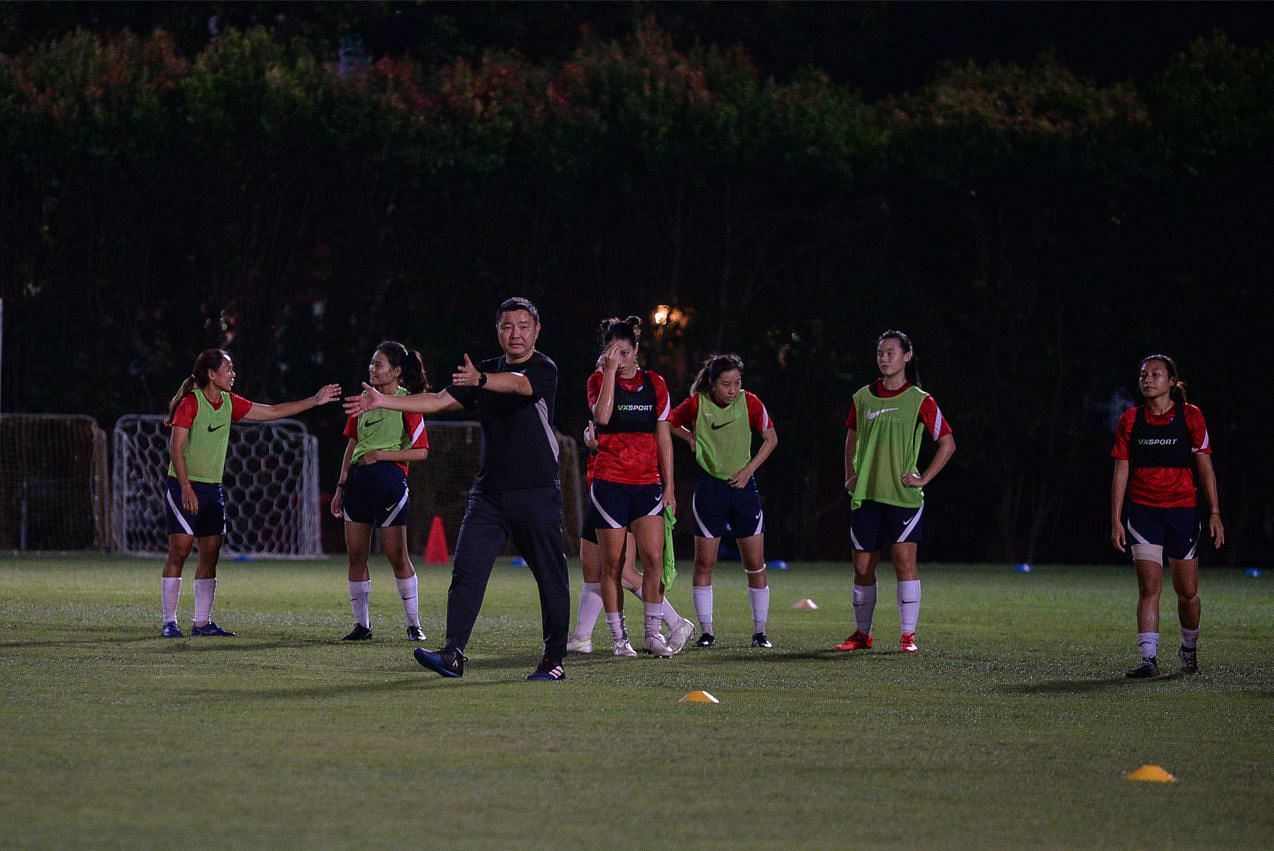
Head coach Stephen Ng led the national team to the Women's Asian Cup qualifiers. PHOTO: AMANDA LEO
Lack of support
To add to their woes, players like national midfielder Joey Cheng, 28, struggle to juggle work and sport. She could not play in the Women’s Asian Cup qualifiers as she was busy with her job as a programmer at The Theatre Practice.
“My biggest challenge right now is juggling work and training. But only one of them pays enough to support me,” she said.
Cheng started playing football at 13 when she was a student at Queensway Secondary School, but only joined the school team when she was 16.
Her parents were not happy with her decision. She explained: “My mum told me I could not play football because I needed to do ‘girly’ things like join a choir. For women’s football to get better, the mindset of Singaporeans needs to shift.”
Her mother eventually came around when football earned her a place at St Andrew’s Junior College through a co-curricular activity appeal. She later enrolled at the Singapore Management University and became president of its women’s football club.
Cheng played for Petra FC from 2012 to 2016 and won the Women’s Premier League title four times with Warriors FC (2016-2019). She currently turns out for Police Sports Association.
Unlike their male counterparts in the professional Singapore Premier League (SPL), female players are not paid a monthly salary.
That is one of the reasons why former national player Monessha Nair retired in 2018.
She recalls receiving an allowance of $200 to $300 a month from the national team.
She recalls receiving an allowance of $200 to $300 a month from the national team.
“Being a full-time player based on the club or national team allowance is unsustainable,” she said.
Nair, 26, is now pursuing a teaching diploma at the National Institute of Education and intends to continue playing for Tiong Bahru when the women’s league resumes.
“The girls have so much potential and talent. If we were supported a little more, we could definitely make good progress and make a name for ourselves,” she said.
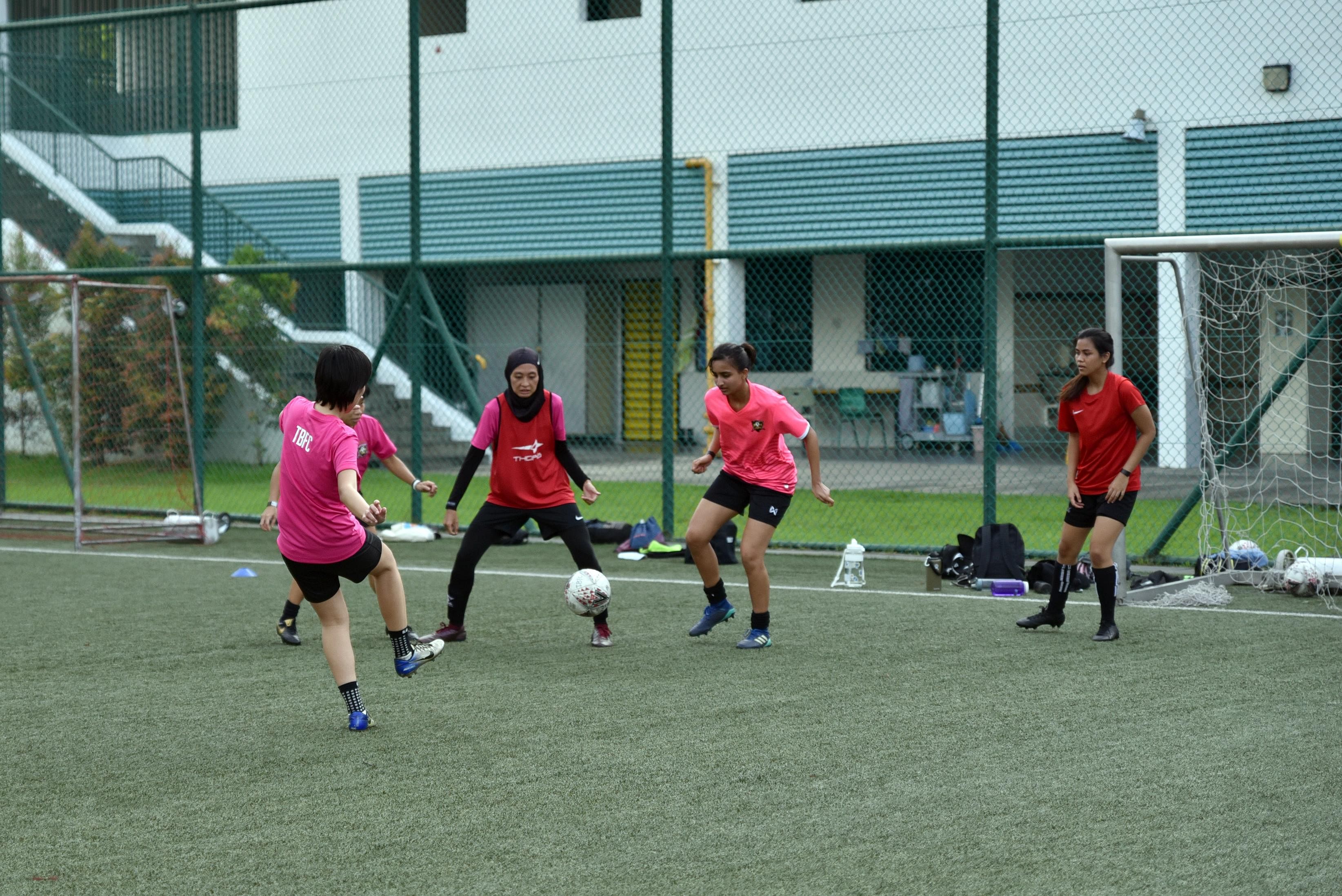
There is also a lack of publicity surrounding the women’s game.
Priscilla Tan, who plays for Virginia United in Australia’s National Premier Leagues Women’s, recalls how she and her former national teammates had to reach out to journalists on their own to get media coverage.
“It’s us players who have to go out and find journalists to cover our stories, even if they are groundbreaking ones,” Tan said.
Aside from money and resources, talent development is also a challenge for women’s football, with only 11 secondary schools offering girls’ football competitively, as compared to more than 80 for the boys. Less than half of the 22 junior colleges here offer girls’ football.
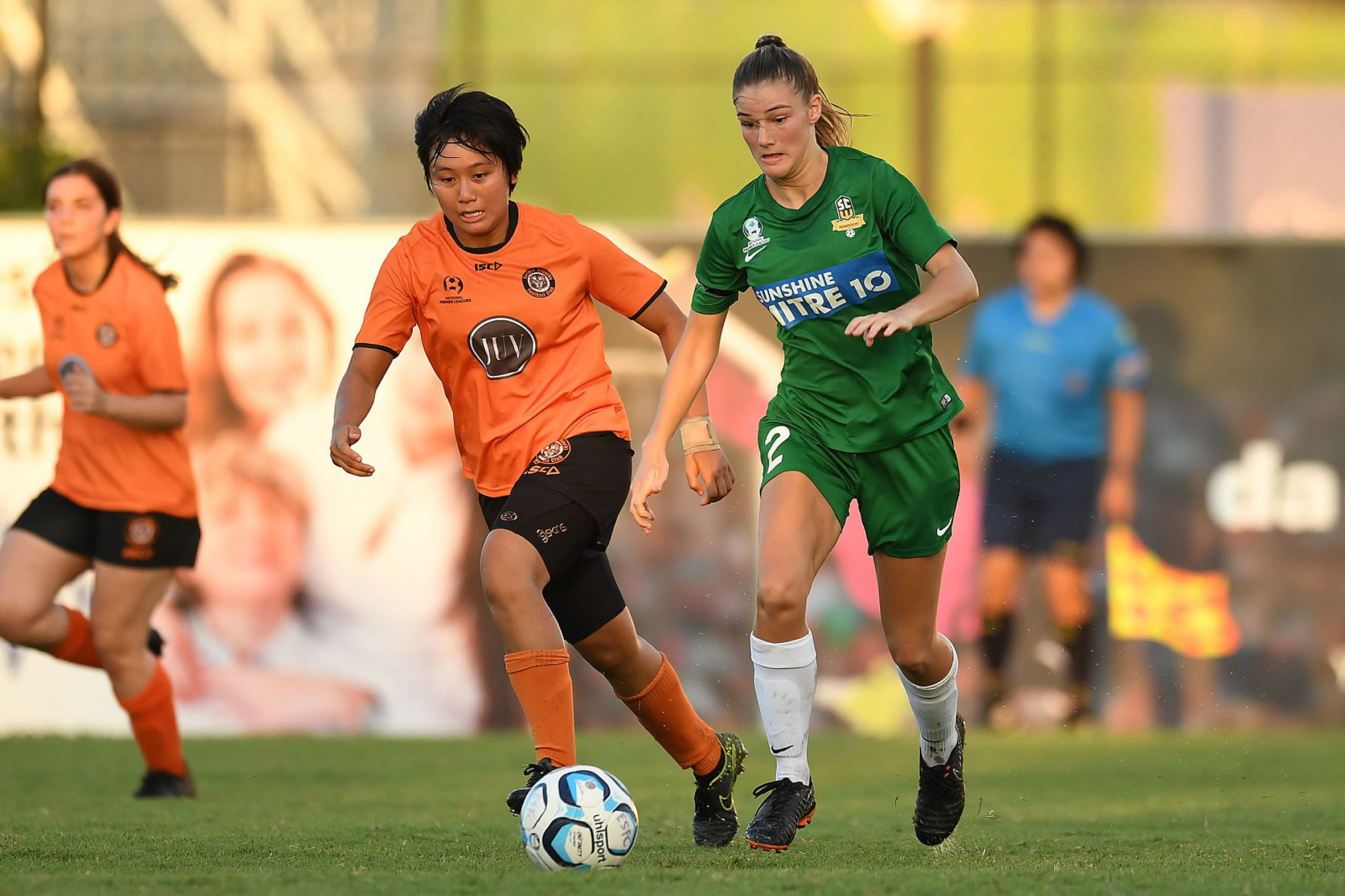
Priscilla Tan (in orange) recalls how she had to reach out to journalists on their own for media coverage. PHOTO: ALBERT PEREZ
A male-dominated world
The obstacles extend beyond the football field. Coach Yeong Sheau Shyan, 42, struggled to qualify for her AFC ‘B’ Licence as one of the requirements was to have coaching experience in a professional club. With the male-dominated SPL clubs the only professional outfits here, she could not get the relevant experience.
Recalling her frustration, Yeong said: “I was coaching the Under-13 girls’ national team at the time, and even that was not seen as a reason to let me take my licence.”
She eventually travelled to Beijing in 2008 to attend the AFC ‘B’ Licence coaching course, paying for her own accommodation at the dormitory of Beijing Normal University for the duration of the course, as this was the only way she could get her ‘B’ Licence. At the time, professional coaching experience was not needed to attain the licence in Beijing.
On her return, she started coaching the girls’ team at Bowen Secondary School and co-founded the Arion Football Academy.
“It’s really important that female coaches are given priority to coach girls’ teams,” she said.
“Since the best male coaches go to the boys, the girls will never get the best unless good female coaches are developed.”
Yeong later attained her ‘A’ Licence in 2014, becoming the first Singaporean woman to do so. She is currently coach of the Lion City Sailors women’s team and the Under-14 and Under-19 national girls’ teams.
Schools remain the best place for girls to pick up the sport, but only starting at secondary or tertiary level might be too late for budding players to hone their skills and compete at a higher level, she said.
“The talent pool is already very limited. If we just have more girls’ teams, within the next five years we will start to see the difference in our national set-up,” said Yeong. “To be a true football nation, football co-curricular activities should be offered to girls too.”
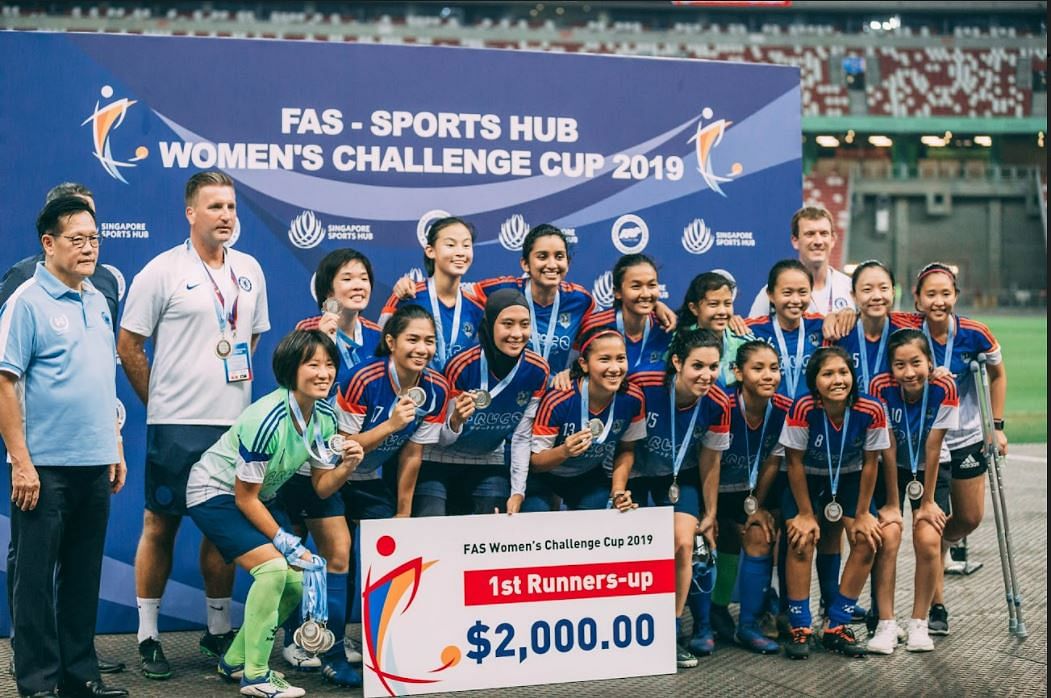
Hope on the horizon
There may be an added boost from the Unleash the Roar! (UTR!) project, which aims to lift local football standards with the goal of having the men’s team qualify for the 2034 World Cup. The project also aims to develop grassroots participation in the sport for boys and girls.
When asked about encouraging more girls to get into the sport, Parliamentary Secretary for Culture, Community and Youth Eric Chua, who last November was named chairman of the newly formed UTR executive committee, said: “We are committed to supporting and enhancing sports for all, including girls.
“To provide a conducive and safe environment for girls to pick up the sport, plans for all-girls training and competitions are underway.”
FAS deputy president Bernard Tan, 55, added: “The emphasis will be to get more girls to participate rather than just focus on the results of the national team. The more we can grow the ecosystem, the better chance we have of putting up a better national team in future.”
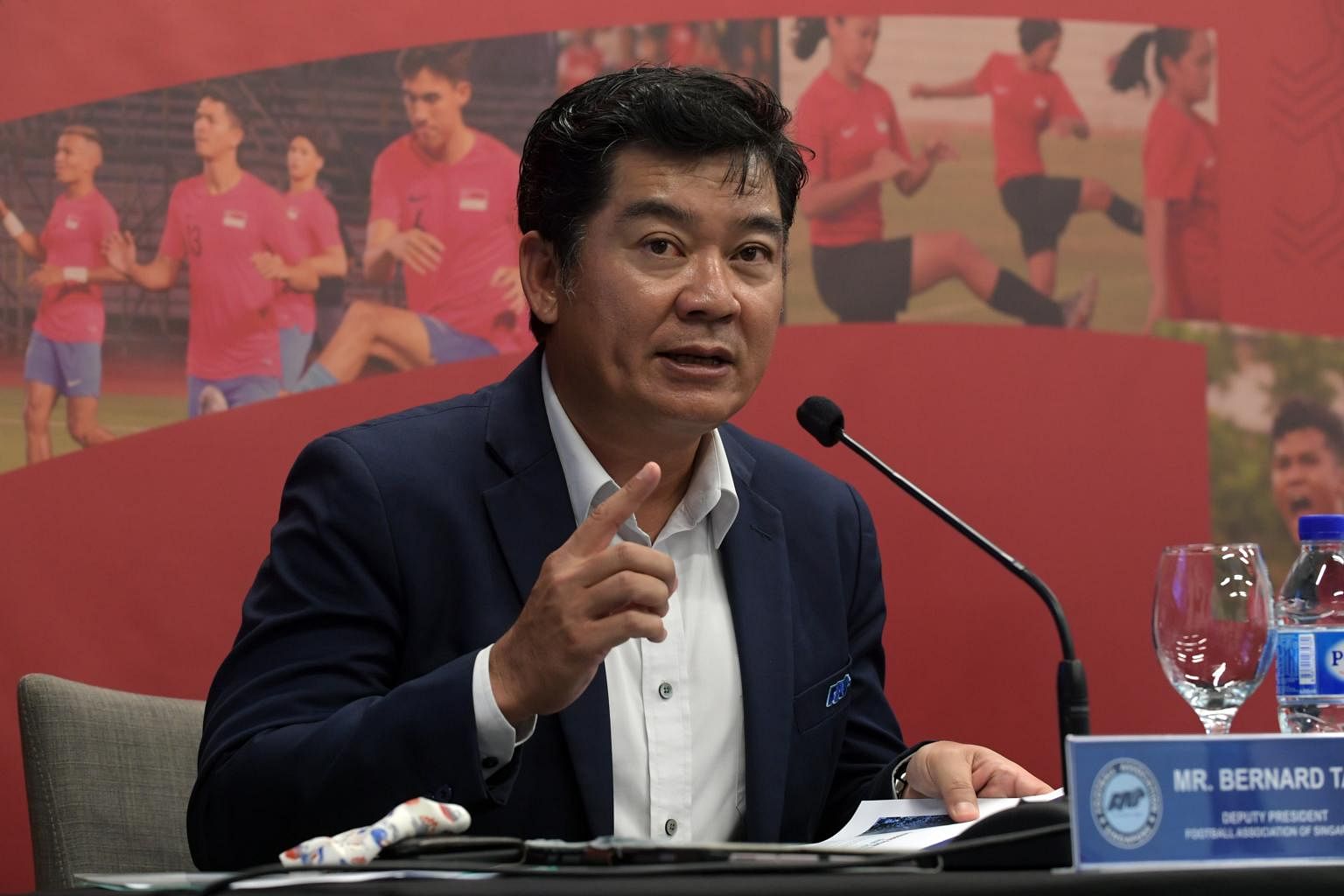
FAS deputy president Bernard Tan at the Unleash The Roar! media conference on March 9, 2021. ST PHOTO: ALPHONSUS CHERN
When the national team had their re-selection trials last July, Rochelle Chan, 26, did not make the cut. She had been on the team since February.
The captain of Tiong Bahru still attends training twice a week with the Under-19 national team, where her coach hopes she will be able to improve and work on her skills before the next Lionesses squad is picked.
While Chan had the chance to train weekly with the national team, her teammates at Tiong Bahru were not so lucky. Being in an amateur national league, their games have been on pause since 2019.
But the SPL completed a full season last year, with a limited number of fans able to attend matches from April.
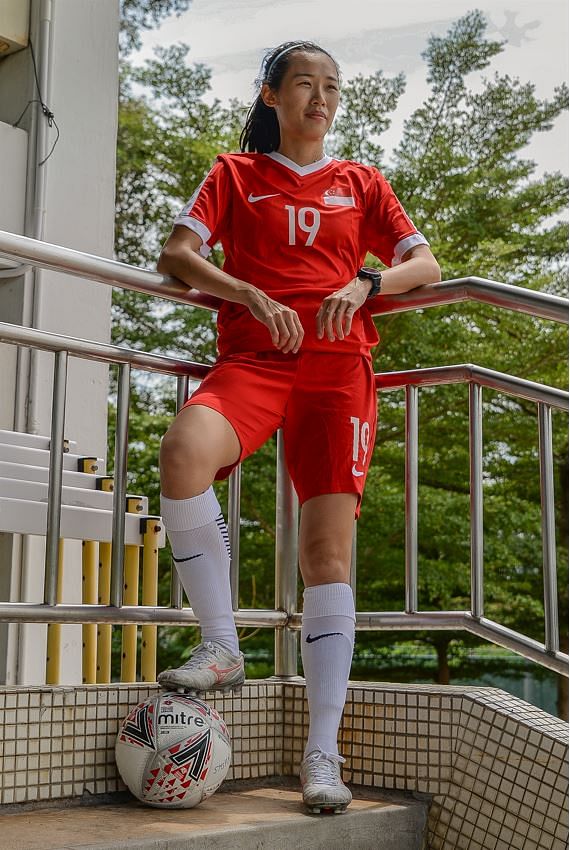
Rochelle Chan attended weekly practice with the Under-19 national team from July to September 2021. PHOTO: AMANDA LEO
When asked what equality in football looked like, Chan said: “I think equality would just be bringing in all these basic necessities and we would be pretty satisfied.
“The national jersey I’m wearing now is the men’s cut,” she added.
Chan admits her club is one of the luckier ones. While most women’s teams are self-funded and managed, Tiong Bahru provide a monthly allowance for their players.
It may not seem like much but for women who usually pay to play, it goes a long way.
The SPL’s reigning Coach of the Year, Hougang United’s Clement Teo, 55, said: “Women deserve to play football too. If men can play football, women can play just as well.”
The SPL’s reigning Coach of the Year, Hougang United’s Clement Teo, 55, said: “Women deserve to play football too. If men can play football, women can play just as well.”
Chan noted: “If we ever get the same opportunity as the guys, we’ll really appreciate it and fight with it. Maybe even more because we know what it’s like to start with nothing.”
- Additional reporting by Amanda Leo
- Ashley Tham and Amanda Leo contributed this article as part of the Go-Far (Going Overseas for Advanced Reporting) module of the Wee Kim Wee School of Communication and Information at Nanyang Technological University.

